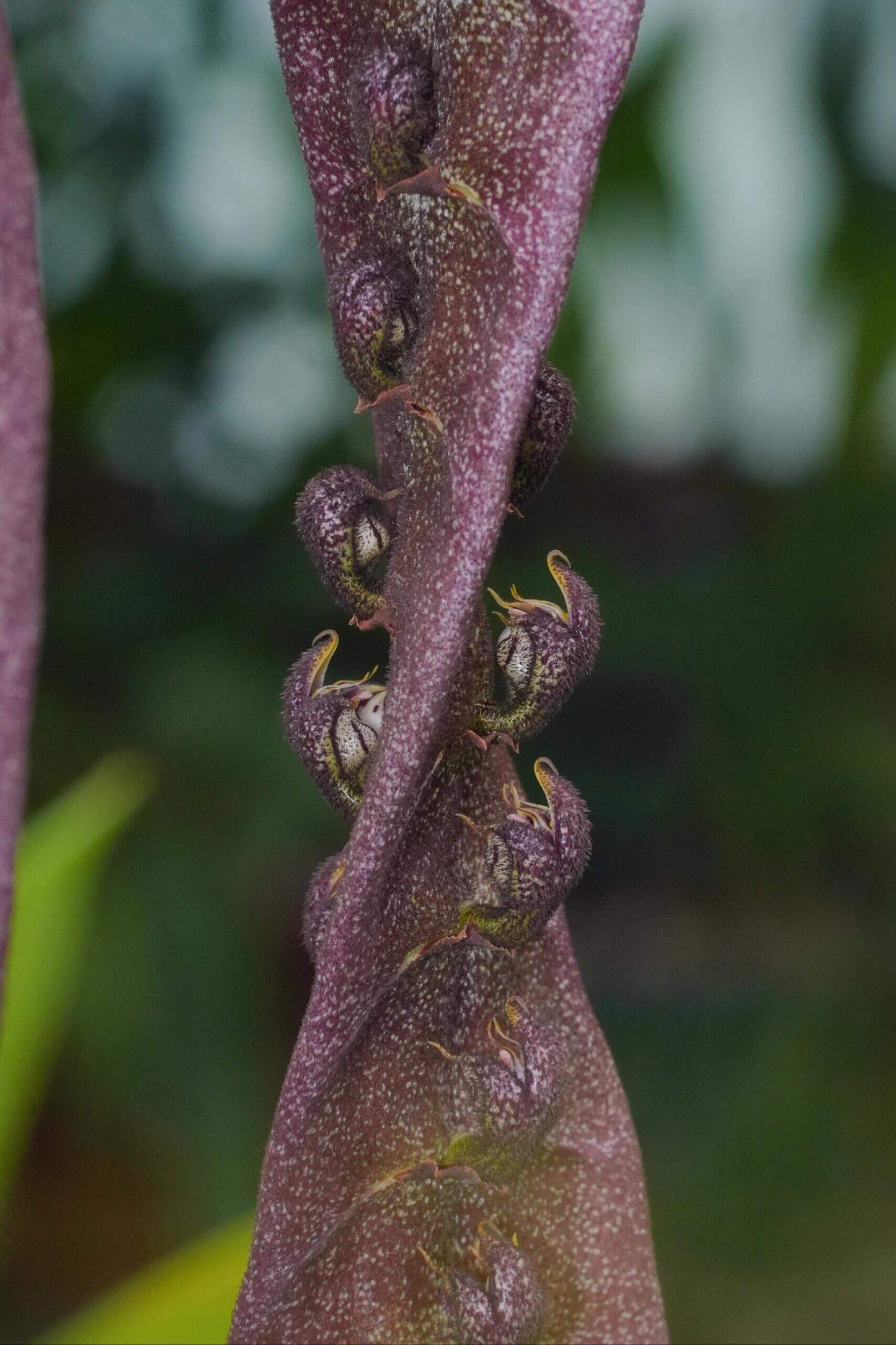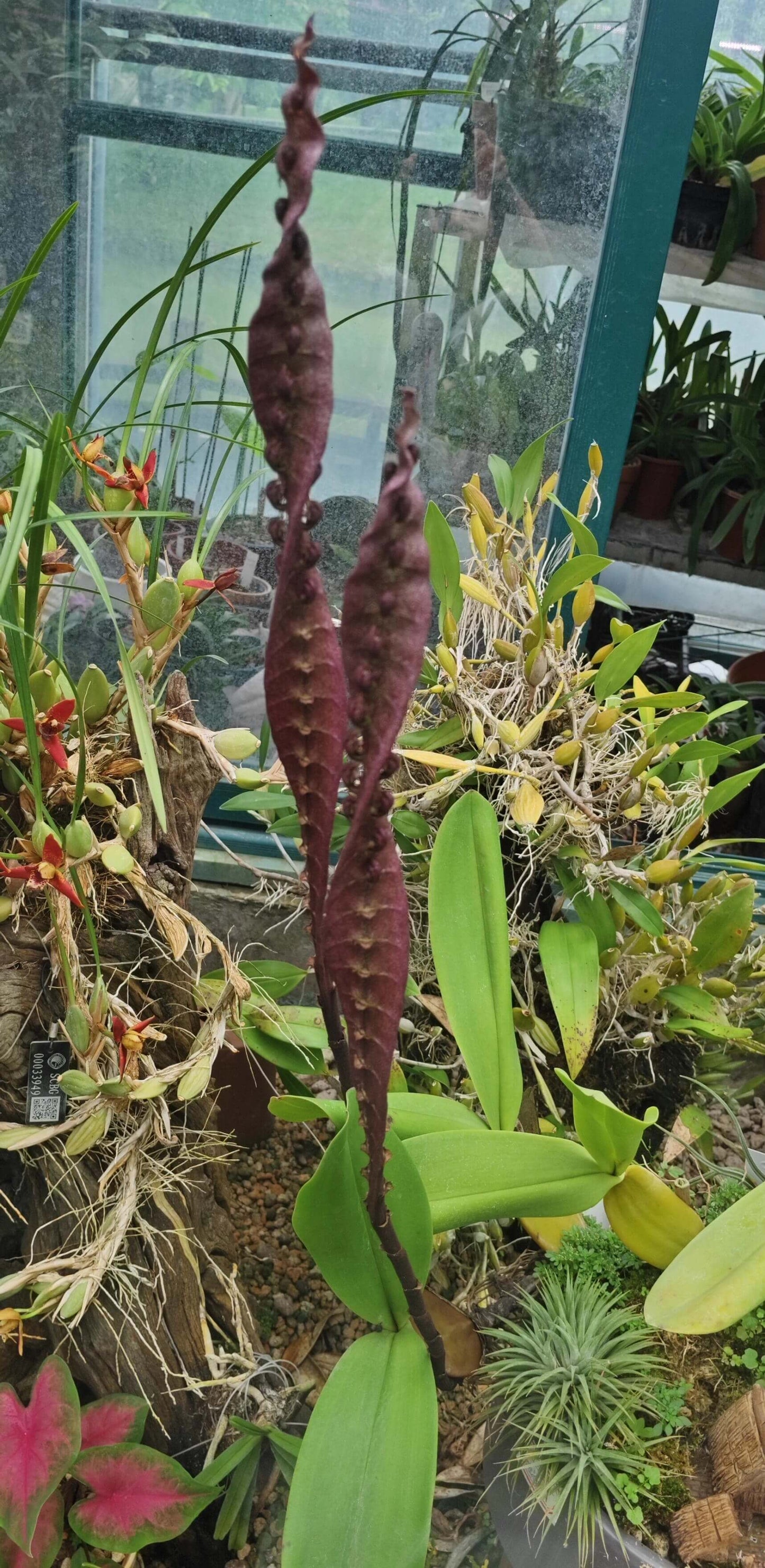Begin With Plants
Bulbophyllum purpureorhachis
Bulbophyllum purpureorhachis
Couldn't load pickup availability
Bulbophyllum purpureorhachis is a distinctive orchid species native to the lowland forests of Central and West Africa, including regions such as the Congo, Cameroon, Gabon, Ivory Coast, and Zaire.
Features:
-
Growth Habit: This orchid is a medium-sized, hot-growing epiphyte characterized by ovoid to rectangular, flattened, 2- to 3-angled pseudobulbs. Each pseudobulb supports two lanceolate, thick, and coriaceous leaves that taper into a short petiole at the base.
-
Inflorescence: Blooms occur in the fall and winter on an arching, flattened purple rachis up to 95 cm (38 inches) long. The flowers are arranged in a longitudinal row along the flat sides of the rachis.
-
Flower Characteristics: Each flower is approximately 0.5 inches (1.3 cm) long, featuring a distinctive, hairy appearance. The inflorescence is noted for its unique and striking visual appeal.
Care Tips:
-
Temperature: Prefers warm to hot conditions, with daytime temperatures ranging from 70°F to 80°F (21°C to 27°C). Nighttime temperatures should drop by at least 10°F (6°C) to around 60°F to 64°F (15°C to 18°C) to promote flowering.
-
Humidity: Thrives in high humidity environments, ideally between 70% and 80%. Maintaining elevated humidity levels is crucial for its well-being.
-
Light: Requires bright, indirect light. Direct sunlight can be detrimental, so it's best to place the plant in a location with filtered light or under shade cloth.
-
Watering: Watering should be consistent, keeping the potting medium moist without allowing it to dry out completely. Mounted plants may require daily misting to maintain adequate moisture levels.
-
Air Circulation: Good air movement is essential to prevent fungal and bacterial issues. Ensure the growing area is well-ventilated.
-
Fertilization: Apply a balanced, water-soluble fertilizer about once a month year-round. It's advisable to under-fertilize rather than over-fertilize, as orchids cannot utilize as much fertilizer in home conditions as they can in greenhouses.
Share



